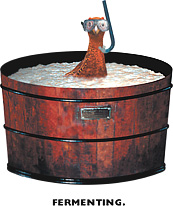

| The CRYPT Mag |

Everyone who uses Windows XP has a user account. A user account helps Windows recognize who is sitting at the keyboard, and, most importantly, what that person is allowed to do at the computer.
Your Windows XP computer starts out with one user account. You can choose an name for your account and customize it with your own pictures, colours, programs and other settings. Other users of your computer can create their own accounts with their own preferred settings.
You can view your own files and setup your account so that other users cannot view, open or edit your files.
When you log on to your account and customize it your own pictures and colours, the changes you make will only affect your account.
There are three types of user accounts: Administrator, Limited, and Guest. Each type of account gets to do different functions on the computer. The account that your computer started with is an Administrator account. If additional accounts were added to your computer, the person who created the account can choose the type.
The administrator controls the entire computer, deciding who gets to use it and what they can do on it. An Administrator can add and remove programs, make changes to the setup of the computer and customize their accounts and files. The Administrator has access to all the other accounts on the computer and all non-private files and can change passwords.
Limited accounts can use most of the computer, but they can't make any big changes to it. They cannot add or remove any programs but have access to all programs on the computer.
Guests can use the computer, but because the computer doesn't recognize them, their actions are tightly restricted. The guest account is intended for someone to check e-mail or browse the Internet.
On your computer, you might see an account with the name Owner. The owner account, with computer administrator privileges, is created during installation if no user accounts are set up at that time. You can rename this account.
To do so, click Start, click Control Panel, and then click User Accounts. Under Pick a task, click Change an account.
Click the account that you would like to change. Click Change my name. Type in the new name and click the Change Name button.
If someone else will use your computer, you can create a new user account for them. To add a new account to your computer, you administrator. must have a computer Click Start, click Control Panel, and then click User Accounts. Under Pick a task, click Create a new account.
Type a name for the new user account, and click Next.
Click either Computer administrator or Limited, depending on the type of account you want to assign to the new user, and then click Create Account.
When sharing a computer, your settings, programs, and files are more secure when you assign a password to your user account.
Open User Accounts in Control Panel.
Click your user name.
Click Create a password.
In Type a new password and Type the new password again to confirm, type your password.
You can also enter descriptive or meaningful text in Type a word or phrase to use as a password hint to help you remember your password.
Click Create Password.
| © RIYAN Productions |
